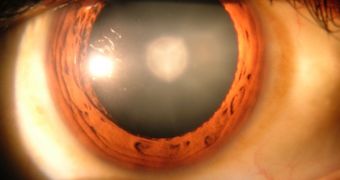A collaboration between the National Aeronautics and Space Administration (NASA) and the National Eye Institute (NEI), part of the National Institutes of Health (NIH), yielded an early warning device for people who are at risk of developing cataract, a clouding in the lenses of the eyes, which affects a very large part of the global population and accounts for 48 percent of worldwide blindness cases.
The device was initially designed as a deep space probe by NASA, but recently its medical potential was also discovered. It works by detecting subtle changes in the proteins of the eye and can detect forming cataract well before the onset of the disease, which then becomes mostly incurable.
"By the time the eye's lens appears cloudy from a cataract, it is too late to reverse or medically treat this process. This technology can detect the earliest damage to lens proteins, triggering an early warning for cataract formation and blindness," explains NEI medical officer Manuel B. Datiles III, the lead author of a series of clinical trials that tested the new, non-invasive device.
Rafat R. Ansari, who is a NASA senior scientist at the John H. Glenn Research Center, told NEI about the potential the device has, after learning that his father had been diagnosed with cataract. The probe uses a laser light technique dubbed dynamic light scattering (DLS), which was at first used to detect the growth of protein molecules in the freezing, zero-gravity environments of outer space. Learning that cataract is also triggered by protein changes, he co-authored the clinical trials, in an attempt to prevent other people from suffering his father's fate.
"We have shown that this non-invasive technology that was developed for the space program can now be used to look at the early signs of protein damage due to oxidative stress, a key process involved in many medical conditions, including age-related cataract and diabetes, as well as neurodegenerative diseases such as Alzheimer's and Parkinson's. By understanding the role of protein changes in cataract formation, we can use the lens not just to look at eye disease, but also as a window into the whole body," says Ansari.

 14 DAY TRIAL //
14 DAY TRIAL //